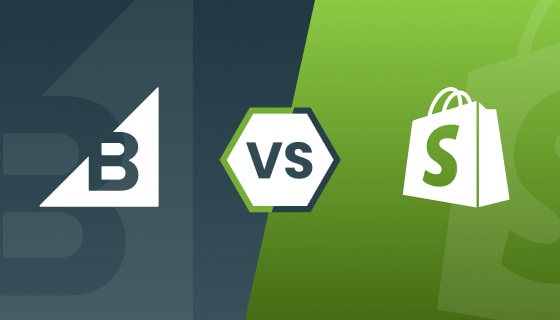Introduction
In this evolving digital landscape, businesses demand web solutions that scale effortlessly while providing the flexibility for unique, dynamic user experiences.
Traditional CMS platforms, once effective, now fall short in accommodating the growing need for customization, speed, and omnichannel capabilities.
With more businesses managing content across various platforms—web, mobile, IoT—the demand for adaptable, API-first solutions like Strapi has surged.
Its ability to handle intricate workflows, integrate effortlessly with other systems, and scale in real-time makes it a go-to choice for modern enterprises.
How Strapi Is Positioned As A Modern Solution For Businesses
Strapi stands out as a cutting-edge solution in today’s fast-paced digital landscape. It offers the flexibility modern businesses need to stay competitive.
Unlike traditional CMS platforms that tie content management to specific front-end frameworks, Strapi’s headless architecture decouples the back-end from the front-end. This allows content to be seamlessly delivered across several channels, from websites and mobile apps to IoT devices.
Additionally, Strapi’s API-first design enables quick integrations, streamlines workflows, and accelerates time to market, which is essential for businesses striving for digital innovation.
What Makes Strapi Different From Traditional CMS Platforms
Strapi sets itself apart from traditional CMS platforms by offering unparalleled flexibility and customization.
While traditional CMS systems like WordPress often rely on predefined structures and plugins, Strapi empowers developers to create custom APIs and adapt the platform according to specific project requirements.
Strapi’s headless architecture allows content to be distributed smoothly across multiple platforms, such as mobile apps, websites, and IoT devices, all from a single backend.
It also supports an extensive range of front-end frameworks such as React, Vue, and Angular, making it incredibly versatile for developers and businesses alike.
This flexibility, user-friendly interface, and open-source nature positions Strapi as a game-changer for modern, scalable web development.
What Is Strapi?
Introduction To Strapi As A Headless CMS
Strapi is an open-source, headless CMS developed to offer unparalleled flexibility and scalability. By separating the backend (content management) from the front-end (presentation layer), Strapi empowers businesses to deliver content seamlessly across platforms like websites, mobile apps, and IoT devices.
Strapi’s API-driven model allows businesses to create custom, scalable solutions, making It an excellent choice for those seeking to innovate beyond traditional CMS constraints.
Key Technical Features Of Strapi
Strapi offers robust technical features tailored to modern development needs. It provides fully customizable APIs, allowing developers to extend functionality with ease.
Additionally, Strapi supports a variety of plugins, enabling users to integrate tools like authentication, media libraries, and analytics seamlessly. Its powerful content modeling capabilities enable businesses to define custom content types, ensuring flexibility.
Moreover, Strapi’s role-based access control ensures data security, making it an excellent fit for businesses handling complex content structures across multiple platforms. It is also for those seeking scalability and data protection.
How Strapi Enables An API-First Approach For Multi-Platform Content Delivery
Strapi’s API-first approach simplifies multi-platform content distribution through robust RESTful and GraphQL APIs. This flexibility ensures seamless, real-time content delivery across websites, mobile apps, and IoT devices.
For instance, an eCommerce brand can use Strapi to synchronize product details simultaneously across their mobile app and website, ensuring a unified experience.
By separating content management from delivery, Strapi accelerates updates and effortlessly adapts to different channels, helping businesses enhance scalability, improve efficiency, and future-proof their content strategies.
Why Businesses Should Choose Strapi
When looking for a robust content management solution, Strapi emerges as a premier choice because of its unparalleled flexibility, scalability, speed, and seamless integrations.
In this section, we’ll explore how these features empower businesses to manage content efficiently, grow smoothly, accelerate development, and integrate effortlessly into modern workflows.
Flexibility In Content Management
Strapi offers exceptional flexibility by allowing businesses to create custom content types and fields tailored precisely to their operational needs, making data handling efficient and intuitive.
Its adaptability extends to the freedom of front-end technology choice, enabling seamless integration with popular frameworks like React, Vue, or Angular, ensuring that developers can build the best possible user experiences.
Furthermore, Strapi’s architecture enhances content distribution across web, mobile, and IoT platforms, ensuring businesses can easily manage and deliver content across multiple devices and touchpoints.
Scalability For Growing Businesses
Strapi’s headless architecture provides exceptional scalability by decoupling the back-end (content management) from the front-end (presentation layer). This separation allows businesses to expand effortlessly without technical limitations, making it ideal for handling increased data loads and high-traffic environments.
Whether scaling a complex eCommerce site or managing data-intensive applications, Strapi can seamlessly accommodate growth while maintaining optimal performance.
Its ability to handle intricate data structures and the flexibility to integrate with various platforms ensures that businesses can grow without compromising speed or functionality.
Speed Of Development And Deployment
Strapi excels at accelerating the development and deployment process with its fast setup and minimal configuration. Developers can quickly create prototypes and move them to production, reducing time-to-market.
Strapi’s built-in tools, such as content management APIs and intuitive admin panels, further streamline the development cycle. These features make it ideal for businesses needing to launch projects quickly without compromising functionality, enabling teams to focus on creating value rather than spending time on repetitive configurations.
Integration With Modern Tools And Workflows
Strapi’s architecture enables seamless integration with various modern tools and workflows, enhancing productivity and collaboration.
Businesses can easily connect Strapi with CRM, ERP, marketing tools, and databases, ensuring a cohesive content management experience. Its REST and GraphQL APIs facilitate efficient data delivery, allowing teams to work with their preferred tools without disruption.
Strapi’s robust plugin system enables users to effortlessly extend functionality, optimize their processes, and create a more efficient development environment that leads to faster, more impactful results.
Choosing the right content management system is paramount for business success. Strapi offers the flexibility, scalability, and speed needed to enhance your content strategies.
Consider implementing Strapi to simplify your workflows and drive innovation, keeping your business ahead in the competitive landscape.
When To Choose Strapi For Website Development
Strapi’s versatility makes it an ideal choice for diverse website development needs. Whether managing multi-platform content, building custom applications, handling extensive datasets, or focusing on back-end development, Strapi provides the flexibility and power to meet various business demands efficiently.
In this section, we’ll explore key scenarios where Strapi proves to be the optimal solution for digital-era businesses.
Multi-Platform Content Delivery Needs
Strapi is suitable for businesses aiming to deliver content across numerous platforms, such as websites, mobile apps, and digital kiosks. Its API-first approach ensures that content can be distributed seamlessly across all digital touchpoints.
Strapi offers a unified content management experience for companies with omnichannel strategies, reducing redundancies and simplifying updates across platforms.
This maintains consistency and streamlines workflows across web, mobile, and IoT platforms, driving better engagement and operational efficiency.
Custom Application Development
Strapi is an excellent solution for businesses that require highly tailored websites or applications. It excels at building intricate, data-driven applications, offering unparalleled flexibility to meet specific business requirements.
Whether you’re developing a custom eCommerce platform or a specialized enterprise solution, Strapi lets you manage complex data structures effortlessly.
Its adaptable framework ensures businesses can create highly customized, scalable digital experiences while maintaining optimal performance and user engagement.
Data-Heavy Applications
Strapi is highly effective for businesses handling large datasets and complicated relationships. Its robust architecture seamlessly manages dynamic content, making it an outstanding choice for industries like eCommerce and news portals that require real-time data processing.
With Strapi, businesses can efficiently organize and deliver content while maintaining performance, even with high traffic volumes.
Its flexibility and scalability ensure smooth handling of complex data structures, supporting advanced content management strategies and enhancing the user experience across all digital channels.
Back-end Focused Development
Strapi is a superb choice for businesses prioritizing robust back-end solutions while maintaining complete creative freedom over the front end. It acts as a content hub, distributing data seamlessly through REST or GraphQL APIs, which can be used across any front-end framework such as React, Vue, or Angular.
For companies focused on back-end infrastructure, Strapi allows developers to easily manage dynamic content while distributing it to several platforms, such as websites, mobile apps, and IoT devices, without compromising flexibility.
Strapi’s flexibility, scalability, and seamless API integrations make it a top-notch solution for businesses aiming to future-proof their digital strategies.
Whether for multi-platform content delivery or building custom applications, Strapi offers unmatched control over both front-end and back-end, ensuring your business stays agile and innovative.
Business Benefits Of Strapi Website Development
Strapi delivers numerous benefits for businesses looking to enhance their website development process. From faster time-to-market and cost-effective solutions to robust security features and improved user experiences, Strapi’s flexibility offers a competitive edge.
In this section, we’ll explore the crucial business benefits that make Strapi an excellent choice for modern, scalable website development.
Reduced Time To Market
Strapi accelerates development cycles with its quick setup and minimal configuration, allowing businesses to bring projects to life faster. Its pre-built, customizable components enable rapid prototyping and reduce the time spent on repetitive tasks.
With its API-first approach, Strapi ensures seamless integration with existing tools, reducing development roadblocks. This flexibility empowers businesses to react quickly to market shifts and deliver updates faster across platforms, ensuring they stay ahead of competitors while maintaining quality.
Cost-Effective Development
Strapi’s streamlined architecture reduces development costs by minimizing operational expenses and reducing ongoing maintenance. Its scalability enables businesses to adapt quickly without incurring high costs typically associated with traditional, monolithic CMS platforms.
Strapi’s flexible options and cost-efficient workflows empower companies to scale and innovate affordably.
Additionally, its open-source nature eliminates licensing fees, making it an even more budget-friendly choice for businesses looking to expand without financial stress while maintaining top-tier performance.
Improved Security
Strapi incorporates modern security practices, such as API-based authentication, ensuring a secure foundation for data access and transmission. Its architecture offers encrypted content delivery, safeguarding sensitive information across various platforms.
With role-based access control (RBAC) and customizable security protocols, Strapi ensures only authorized users can access or modify content.
This robust API infrastructure uplifts security and supports compliance with industry standards, making it a top-notch solution for businesses requiring stringent security measures across digital touchpoints.
Better User Experience
Strapi empowers businesses to deliver optimized and fast user experiences through custom front-end designs. Its flexibility allows developers the freedom to utilize the latest front-end frameworks, ensuring superior UX tailored to specific audience needs.
By integrating cutting-edge technologies, Strapi enhances engagement and adapts seamlessly to changing user expectations.
This combination of speed, adaptability, and design excellence positions Strapi as a prime choice for businesses focused on delivering compelling digital experiences across platforms.
By adopting Strapi for your website development, businesses can enjoy significant benefits such as flexibility, scalability, and enhanced user experiences.
With its powerful capabilities, Strapi enables organizations to streamline content management, adapt to changing demands, and drive growth in today’s digital landscape.
Strapi’s Key Features And Offerings
Strapi’s versatility makes it an ideal choice for modern web development. Its API-first design, customizable content structures, seamless cloud integrations, and open-source advantages empower businesses to manage content efficiently across platforms. This section delves into the key features that enhance Strapi’s effectiveness.
API-First Design
Strapi offers RESTful and GraphQL API capabilities, facilitating efficient data retrieval and management. This API-first architecture allows businesses to integrate their applications and services effortlessly, enabling them to scale and adapt quickly.
With Strapi, developers can create custom APIs tailored to their specific needs, ensuring seamless content delivery across various platforms.
Furthermore, this flexibility enhances team collaboration, streamlining workflows and accelerating project timelines. Strapi’s powerful tools position it as an essential asset for modern digital strategies.
Content Customization And Flexibility
Strapi allows businesses to create custom content types and fields that align with their unique workflows. This flexibility ensures that companies manage content efficiently while adhering to their branding guidelines.
Additionally, Strapi provides role-based access control, enabling teams to collaborate effectively while maintaining security. This customization fosters a more streamlined content management process, allowing businesses to respond swiftly to evolving market demands.
Moreover, the ability to adapt content structures dynamically enhances user experience, providing tailored interactions that resonate with target audiences.
Integration With Cloud And SaaS Tools
Strapi seamlessly integrates with leading cloud platforms such as AWS, Azure, and Google Cloud Platform. This integration enhances operational efficiency and allows businesses to connect Strapi with various analytics, email marketing, and CRM tools.
By leveraging Strapi’s compatibility with these tools, organizations can streamline their workflows and gain valuable insights into user engagement and content performance.
Additionally, these integrations facilitate automated processes, enabling real-time data synchronization, which empowers teams to make informed decisions and enhance overall productivity.
Open-Source Advantage
Being an open-source platform, Strapi benefits from community support and extensibility. This allows developers to modify and extend Strapi’s functionalities based on their specific needs, ensuring that the CMS evolves alongside their business.
The open-source nature fosters collaboration, encouraging developers to enhance the platform and leading to continuous improvements and innovations.
Organizations can leverage community-driven plugins and resources, significantly reducing development time and costs. This collaborative environment ensures that Strapi remains at the forefront of technology, adapting swiftly to changing market demands and user preferences.
Strapi’s key features empower businesses to streamline content management, enhance development speed, and integrate seamlessly with modern tools. By leveraging its API-first design and open-source advantages, organizations can adapt swiftly to changing market demands and drive innovation effectively.

Transforming Event Management With Strapi: A ZealousWeb Success Story
To showcase the real-world impact of Strapi’s flexibility and scalability, we invite you to explore one of our recent projects: Eventflare, an event management platform. Our ZealousWeb team leveraged Strapi’s capabilities to deliver a custom solution tailored to meet Eventflare’s complex requirements in content management, seamless API integration, and dynamic data structuring.
For Eventflare, we crafted a cutting-edge content management system using Strapi’s customizable frameworks. This solution not only simplified content handling across multiple event listings and user interactions but also enabled real-time updates that enhanced user experience.
Our team optimized data flows with API-first architecture, ensuring Eventflare could scale efficiently while maintaining robust performance. Through this project, we demonstrated our rich expertise in Strapi, building an efficient, scalable, and user-centric digital platform.
Explore the full story and see how our Strapi proficiency helped Eventflare simplify operations and scale with confidence in our detailed case study. Discover how ZealousWeb’s customized Strapi solutions could advance your business too.
Challenges Of Strapi And How To Overcome Them
While Strapi offers numerous benefits, it presents certain challenges, especially in adoption, customization, and infrastructure setup. Fortunately, with the right strategies, these hurdles can be overcome effectively.
In this section, we’ll explore these common challenges and provide actionable solutions that businesses can apply to utilize Strapi’s full potential.
Learning Curve For Non-Developers
Due to its technical nature, Strapi’s API-first, headless architecture can initially seem challenging for non-developers. However, providing in-depth training sessions, detailed onboarding materials, and easy-to-understand documentation can significantly bridge this gap.
Interactive tutorials, community-driven resources, and hands-on workshops also help build confidence. By demystifying its features and offering ongoing support, teams can quickly familiarize themselves with Strapi’s robust ecosystem, enabling even non-developers to manage content and workflows efficiently.
Over time, this comprehensive approach will make Strapi accessible to all team members, irrespective of technical background.
Managing Customizations And Upgrades
Handling upgrades or customizing Strapi’s functionalities can be complex without a well-planned strategy. Businesses should start by regularly backing up data to prevent any loss during updates.
It is paramount to test changes in staging environments before implementing them to ensure stability. Utilizing version control systems like Git helps monitor modifications and maintain code integrity.
Additionally, keeping a detailed log of customizations can assist teams in rolling back changes if necessary, ensuring minimal disruption to workflows during upgrades or adjustments.
Hosting And Infrastructure Setup
Choosing the right hosting provider for Strapi and designing a scalable infrastructure is critical to long-term success. Cloud-based platforms like AWS, Azure, or Google Cloud offer flexible deployment options, robust security features, and scalable resources adaptable to your business growth.
Additionally, businesses should focus on load balancing, backup systems, and API management to ensure seamless scaling and efficient performance, primarily during traffic spikes or complex operations.
A well-architected infrastructure ensures high availability, security, and optimal performance for Strapi-powered applications.
Strapi’s flexibility and robust features make it a potent tool for businesses, but overcoming its challenges requires careful planning and strategy. By addressing learning curves, managing customizations, and ensuring a solid infrastructure setup, you can unlock Strapi’s full potential and drive digital success.
Comparison With Other CMS Platforms
When evaluating content management systems, Strapi stands out due to its headless architecture, flexibility, and open-source nature. This section assesses Strapi against traditional CMS platforms like WordPress and other headless CMS solutions, providing valuable insights into how Strapi addresses the evolving needs of modern businesses.
By understanding these differences, you can make informed decisions on whether Strapi is the right fit for your content management needs.
Strapi vs. WordPress
Strapi’s headless architecture provides unmatched flexibility, allowing developers to decouple content management from front-end presentation. This structure makes it ideal for businesses needing multi-platform content delivery, such as websites, mobile apps, and IoT devices.
In contrast, WordPress is better suited for smaller projects or businesses requiring a more straightforward, all-in-one CMS solution.
Strapi’s API-first approach enhances scalability and performance, ensuring smooth content delivery across channels as business needs grow. Its customizability further enables modern digital strategies, offering outstanding adaptability.
Moreover, Strapi offers superior integration capabilities with various APIs, making it easier to connect third-party tools. Its faster, more tailored content creation benefits businesses handling complex digital ecosystems.
For enterprises prioritizing flexibility, scalability, and advanced content management, Strapi is the apparent future-ready, versatile choice compared to WordPress.
Strapi vs. Other Headless CMS Solutions
Strapi stands out among other headless CMS platforms due to its user-friendly interface, flexibility, and vast customization options.
Unlike some headless CMS solutions that may require more technical expertise, Strapi simplifies content management without compromising functionality or scalability.
Its open-source nature empowers developers to modify and extend features, offering a higher level of control over the content structure and workflows.
Furthermore, Strapi’s built-in RESTful and GraphQL APIs facilitate smoother content delivery, making it ideal for businesses prioritizing fast, scalable, and efficient multi-platform strategies.
While other headless CMS platforms may excel in niche areas, Strapi offers a well-rounded solution that balances ease of use with cutting-edge customization, security, and scalability. This makes it a preferred choice for businesses seeking adaptability and control in dynamic digital environments.
Strapi’s unique combination of flexibility, scalability, and customization sets it apart from traditional CMS platforms like WordPress and other headless CMS solutions.
For businesses seeking a future-proof content management system that can adapt to evolving digital needs, Strapi offers an all-inclusive solution that outshines the competition.
How To Get Started With Strapi Website Development With ZealousWeb
Before we conclude, let’s share some valuable insights to help you get started with Strapi website development. From essential steps to launching your project to finding the right team and tools, these tips will guide you toward a successful Strapi implementation for your business.
Key Steps To Initiate A Strapi-Based Project For Your Business
Starting a Strapi-based project commences with clearly defining your business goals and understanding how Strapi’s headless architecture can meet those needs.
Whether you’re looking for multi-platform content delivery or a more scalable CMS solution, Strapi’s API-first approach allows for flexible, future-proof development.
Outline your objectives and pinpoint key integrations, such as third-party services, to improve your project’s functionality. Proper planning at this stage ensures a streamlined development process with a roadmap that aligns with your timeline, resources, and scalability goals.
How To Find The Right Development Team For Strapi Projects
Choosing the right Strapi development team is paramount for long-term success. Seek an agency that offers a full-fledged team—developers, designers, content strategists, and digital marketers—to address all facets of your project in-house.
Agencies with comprehensive expertise ensure seamless integration across the development, design, and content management stages. Check for proven experience in Strapi projects, with a robust portfolio demonstrating their ability to handle complex customizations and integrations.
Note: A well-rounded team with expertise across different areas will not only build a powerful website but also provide ongoing support for growth.
Essential Tools And Resources To Kickstart Strapi Development
You must leverage the right tools and resources to ensure efficient Strapi development. Your development team should be proficient in handling Strapi’s APIs, including RESTful and GraphQL, ensuring smooth integration with external platforms like CRM systems, marketing tools, or eCommerce solutions.
Additionally, cloud services such as AWS or Google Cloud provide scalability, while performance monitoring tools help track the efficiency of your content delivery. Access to collaborative project management tools is also essential, ensuring smooth communication throughout the development process.
If you ever seek an experienced Strapi web development agency that covers all the aspects we discussed above, from tools and resources to a comprehensive team, ZealousWeb is your ideal solution.
We offer the perfect blend of expertise, technology, and team. Our dedicated Strapi experts provide end-to-end solutions, from design to development and marketing, ensuring a seamless experience.
Our proven success in handling complex Strapi projects will guide your business through every stage of development, ensuring long-term scalability and success.
Conclusion
Strapi is a powerful choice for businesses building scalable, multi-platform websites. Its headless architecture, API-driven approach, and open-source flexibility allow seamless content delivery and customization. Whether enhancing your digital presence or future-proofing your business, Strapi equips you with the tools for success.
For businesses considering Strapi, partnering with the right development team is key. Strapi’s adaptability and robust features make it ideal for innovation, and with ZealousWeb’s expertise, you’ll have the strategic support to achieve your digital goals through streamlined Strapi development.













